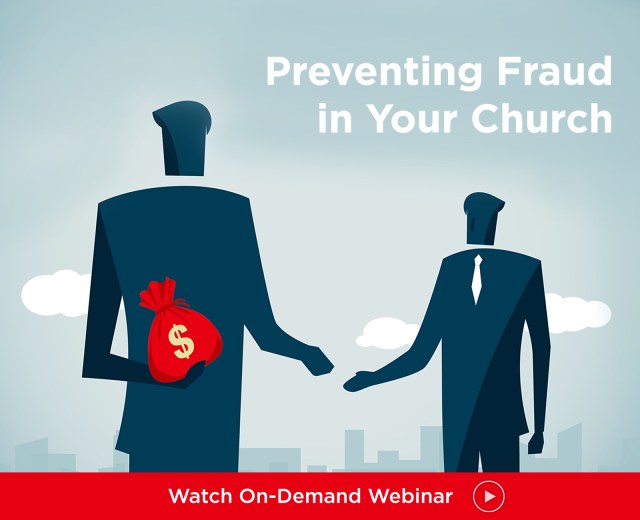Every congregation gladly welcomes visitors and goes out of its way to make them feel at home. Unfortunately, many churches may be unintentionally drawing a whole different set of guests that most certainly are not welcome—visitors with wings, claws, teeth, and fur.
Sooner or later, most churches will have to deal with wildlife. Many churches mistakenly think animal control is a minor matter. Not so, according to Stephen Vantassel, project coordinator for the University of Nebraska—Lincoln’s Internet Center for Wildlife Damage Management.
Vantassel says there are three main reasons wildlife control deserves constant attention: health, public relations, and property damage.
“There are a number of things that churches can do to prevent and reduce the likelihood of ever having a problem like this. But it does take effort and it takes people being aware of issues that are occurring with their building,” Vantassel says. “The prevention here is worth a pound of cure, in a very big way.”
Concerning health, Vantassel notes that things like bird or bat droppings can cause such illnesses as histoplasmosis, a fungal infection that mimics flu symptoms and can eventually cause death. Allowing droppings to build up over a period of time around air-conditioning intake vents can allow histoplasmosis to spread throughout the church.
Church kitchens and food service areas are other obvious examples of why sanitation and the prevention of allowing rodents and other animals is critical to the well-being of a church.
Wildlife problems also present potential public relations challenges for churches. At the very least, churches do not want a reputation in the community that their buildings are dirty or unsightly because of wildlife droppings or visible damage. Public perception is a powerful reason to take proactive measures to keep wildlife out.
Besides the unwelcoming appearance of pigeons on the roof or other telltale signs of animal presence, Vantassel says the continuing cultural shift toward animal protection, most visible through animal rights protest groups, is another reason churches need to plan.
“[Cruelty to animals] is the last thing you want to be a stumbling block for non-believers,” he says. “Plus, to have the church janitor hit an animal over the head with a shovel might make the news.”
A pricey problem
By far the biggest problem with wildlife and churches is the property damage that occurs when rodents and other wildlife have the run of the building. Squirrels love to gnaw, as do all rodents. Inside walls, they can chew through wires, creating potential fire hazards; burrow through insulation, destroying its effectiveness; and damage wood with their incessant gnawing.
Other species, such as beavers and raccoons, cause a variety of problems as well. Beavers can cause extensive damage to trees and create flooding problems, and the cost of replacing trees, flooded basements, wells, septic tanks and roads can range from hundreds of dollars to tens of thousands of dollars. Raccoons break into buildings and nest in attics. The resulting building damage can range from $200 to several hundred dollars, including the expense of the loss of insulation capacity and the cleaning of raccoon waste.
Perimeter defense
According to Vantassel, a church can greatly increase its chances of avoiding wildlife problems by following some basic rules:
- Wildlife needs three things to survive: food and water, shelter, and access. Remove any one of those factors to help stave off a wildlife problem.
- Make sure dumpsters work properly, seal tight, and that trash is not scattered around the outside.
- If the church or its school has bird feeders, be sure they are modified so the food is not reaching the ground. For instructions on making modifications, visit www.icwdm.org.
- Property cleanliness is essential. Piles of leaves or debris become structures that can give animals, especially rodents, places to hide.
- Don’t use low-crawling ivy on building walls because that can harbor small rodents called voles.
- Keep bushes up off of the ground.
- Have a “weed-free barrier” of about 24 inches around the church using one-inch crushed stone. It’s a way of making the building less attractive to rodents.
- Thoroughly check all buildings at least once a year from top to bottom. Look for any gaps or weaknesses in wood a quarter-inch or larger. A mouse only needs 3/8ths of an inch to gain entry. Address all problems as soon as possible. But Vantassel warns, “If you suspect that a hole is possibly being used, then never secure a hole unless you are certain it is not being used. You may trap something in or trap something out. I have a half-inch piece of plywood that a carpenter put over a hole and he said he thought he saw the squirrel leave. Well, the fact is that he did, but she left her young behind and she chewed all the way through a brand new piece of half-inch plywood.” Also, any hole with brown rub markings around it usually means an animal is using it because an animal’s body oils leave brown marks over time.
- Another simple way to test the activity of a hole: Take a piece of rolled up paper, plug the hole, and then monitor it. If there is no activity after five to seven days—meaning it’s not pushed out or disturbed—it’s likely not being used.
- If a hole forms after a storm, close it as soon as possible, before an animal discovers it.
- Keep tree branches away from roof lines. Vantassel warns, “Under no circumstances should a squirrel or raccoon be climbing on your roof. That is a bad sign. Even if they don’t have a home there in your building now, they shouldn’t be there because they may find a gap that you missed, or they may make one.”
- Cap all chimneys with a professionally manufactured stainless steel cap. Besides protecting a chimney crown from further rain damage, a cap also prevents the death of animals. Animals fall in and then can’t get out.
Handling intruders
If wildlife problems already exist, the best solution is to call a professional animal control technician. Some off-the-shelf products are available, but there are state laws to consider—and removing animals isn’t as simple as it may seem.
According to Vantassel, animal control can be expensive. He noted some typical cost ranges to contain wildlife:
- Mice and rodents: A minimum of $250, usually also requiring a contract;
- Squirrels: $250-$750;
- Bats: $500 to thousands of dollars, depending on the church’s size and the need for guano cleanout;
- Pigeons: $250 to thousands of dollars, depending on the extent of the problem.
John Hughes, owner of Nuisance Wildlife Management, Inc. in Charleston, South Carolina, and a member of the National Wildlife Control Operators Association, recalls working with some people at an apartment complex that had bats in it.
“They figured they could do it themselves,” he says. “They went up and put a sonic noise maker in there and after about four days they decided the bats were out and closed the hole. Well, the bats were out, but the rats weren’t out.”
Hughes then faced the difficult task of locating all of the scattered rats.
Anthony Hulbert with Titan Animal Control in Arlington, Tennessee, agrees with the need for a professional once an intruder is discovered.
“Once it’s inside, you’re going to need someone to come in and remove it,” he says. “It’s important that whatever animal is in there is removed and taken away and not left there because they’ll just keep trying to get back in over and over and over, which in turn causes more damage to the building.”





